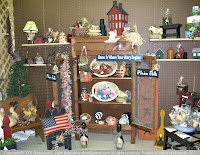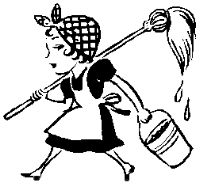Hanging out the laundry
A lady told me about her recent vacation in San Francisco. She was shocked, she said, to see underwear hung out to dry on balconies above busy streets. She guessed she was old-fashioned because she would never pin her underwear to a clothesline and put it on display to the world. It wasn't modest.
This amused me a little because this lady is no shrinking violet. She spent a number of years driving 18-wheelers all over the nation with her husband. She's a plain-spoken person without airs, and she's about 15 years younger than me. Of all the things that she might have been shocked at in San Francisco, I wouldn't have predicted underwear on clotheslines.
When I thought about it, I couldn't remember seeing any sort of underwear hanging on the clotheslines at Mennonite and Amish homes. I can say with certainty that they hang cloth diapers outside to dry, but beyond that, I'm not sure.
When I used a clothesline faithfully for a number of years, I hung out the whole family's underwear. I usually hung the undergarments on an inside line, behind the sheets or towels.
We live in the country. The clothesline was barely visible from the road, but someone who drove into our yard might have seen the laundry well enough to identify individual pieces. To be honest, I wasn't too worried about it.
I asked Isaac (my 19-year-old son) what he thought about underwear hanging in plain view on the clothesline. He says that if he ever sees anything like that, he's going to lodge a complaint with the board of governors immediately. He also says that the only good weapon for fighting something like that is satire. Whatever, Isaac.
Laundry day at a Mennonite home





 I found myself in the mood to clean the refrigerator this afternoon. I took out the shelves and drawers and washed them in the sink. I threw out a few virtually empty salad dressings and pickle jars. I didn't find anything too nasty except for one lemon that was starting to go moldy. It didn't take too long and I'm glad it's done.
I found myself in the mood to clean the refrigerator this afternoon. I took out the shelves and drawers and washed them in the sink. I threw out a few virtually empty salad dressings and pickle jars. I didn't find anything too nasty except for one lemon that was starting to go moldy. It didn't take too long and I'm glad it's done.
 After that shocking experience, Keely wouldn't taste sausage gravy for many, many years. The morning after Christmas this year, I fixed biscuits and gravy, and I noticed that she had some. I'm glad she has finally recovered.
After that shocking experience, Keely wouldn't taste sausage gravy for many, many years. The morning after Christmas this year, I fixed biscuits and gravy, and I noticed that she had some. I'm glad she has finally recovered.